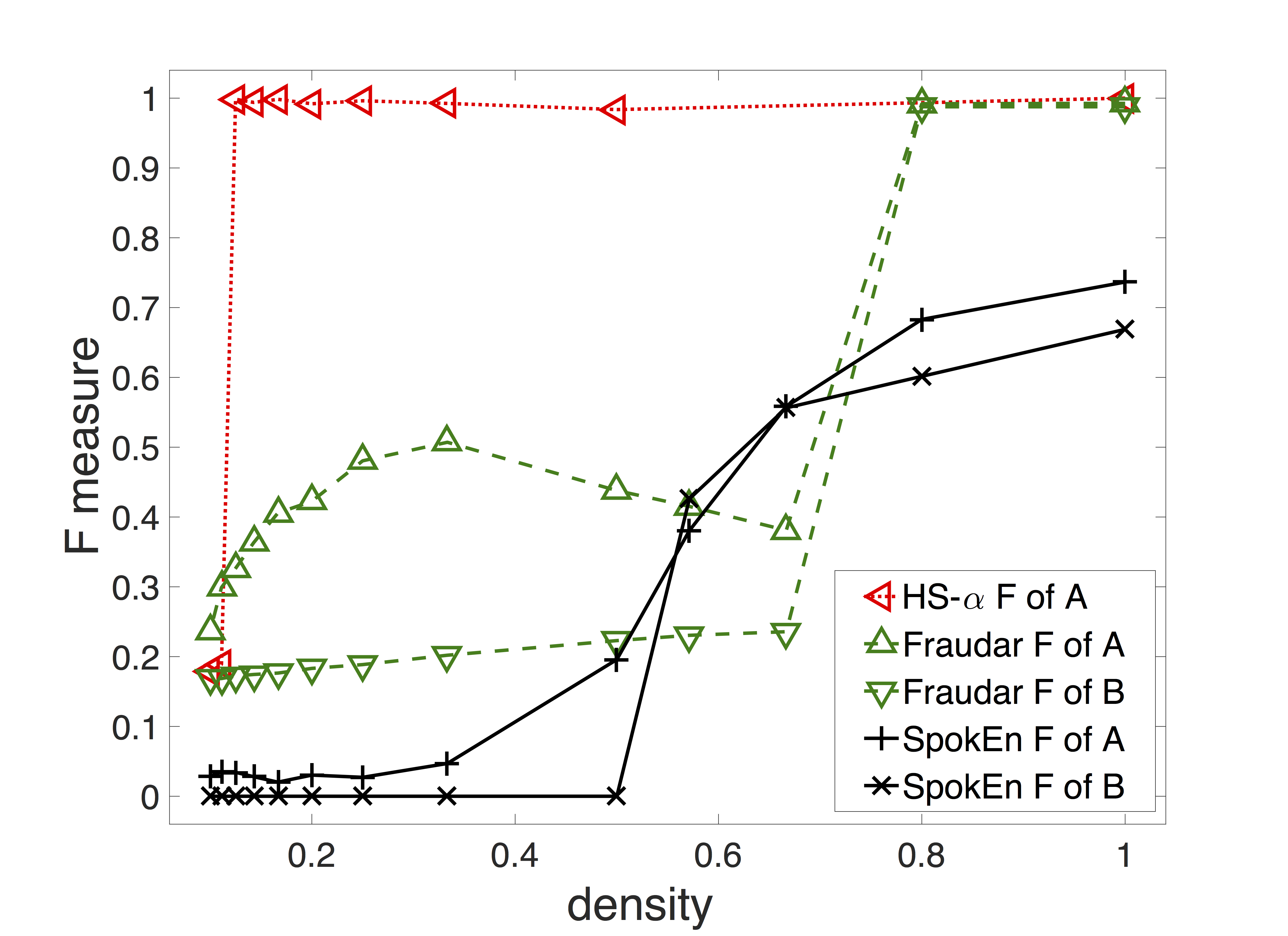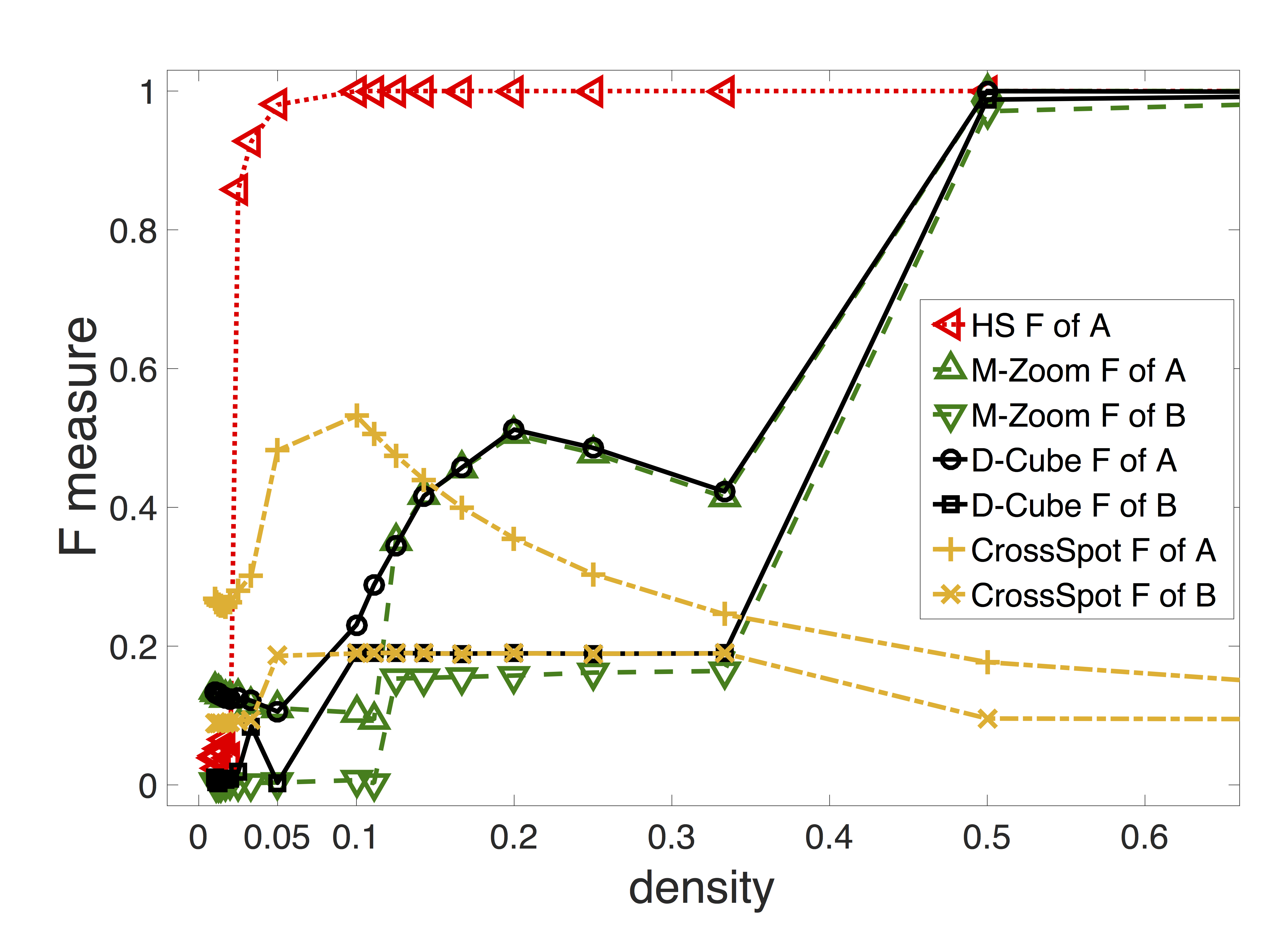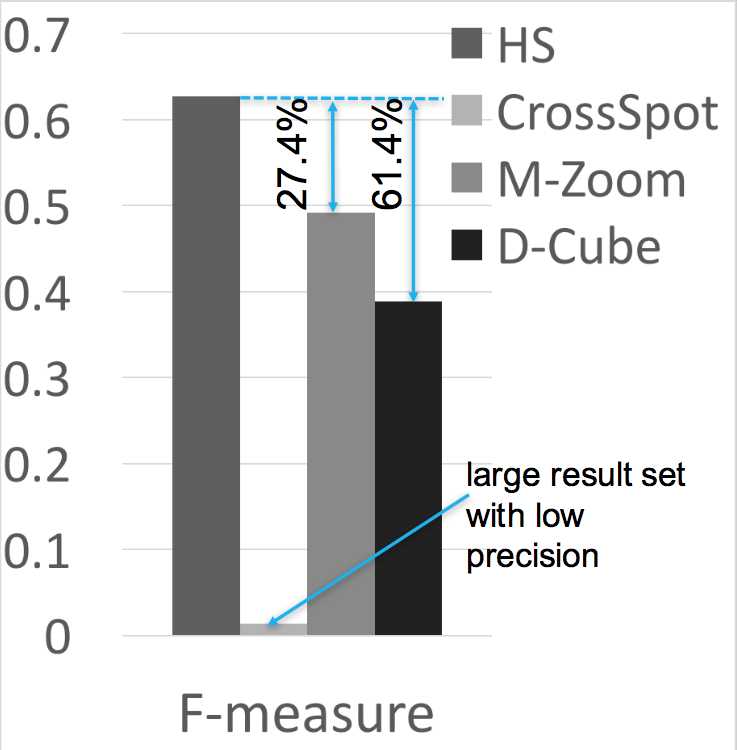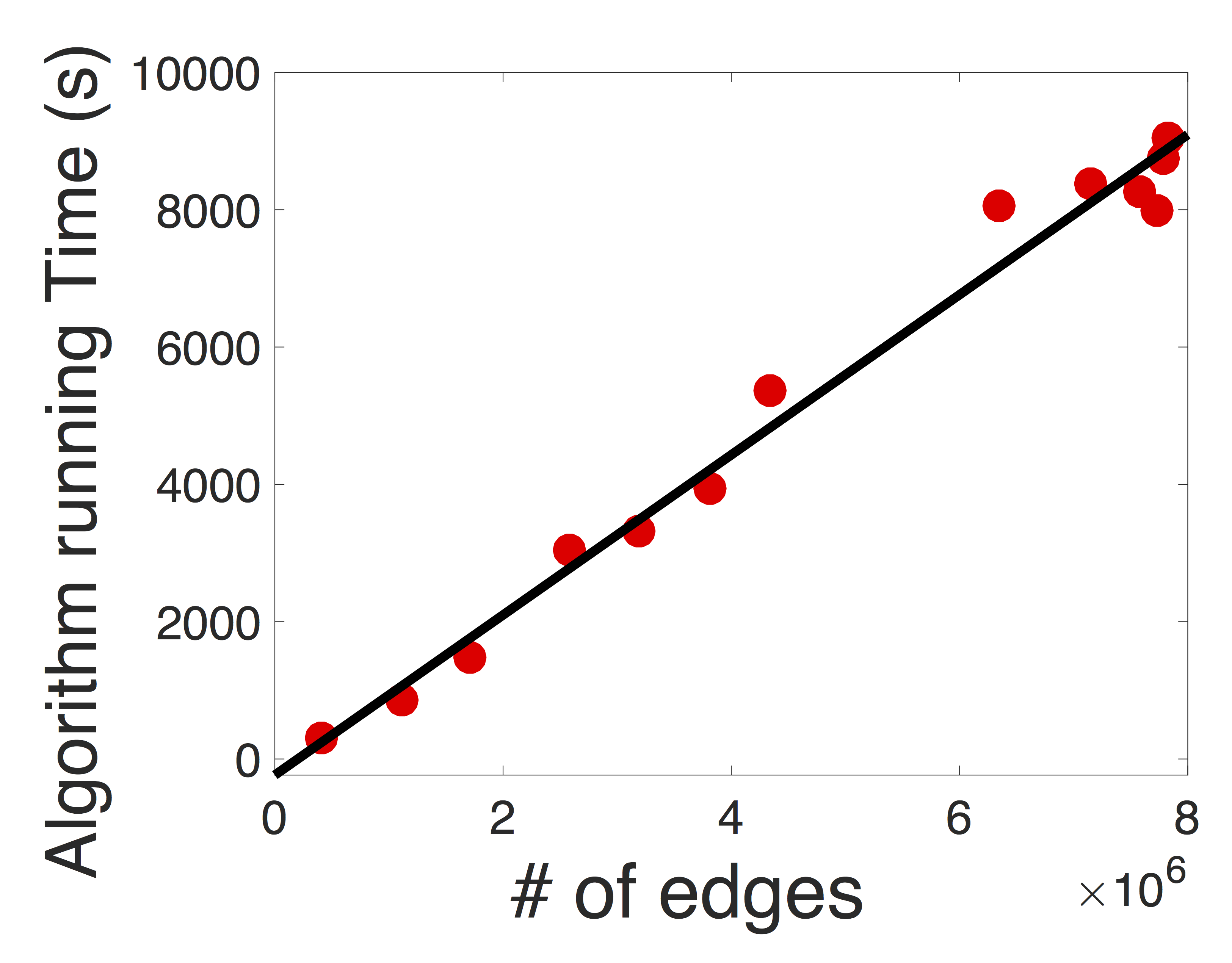HoloScope: Topology-and-Spike Aware Fraud Detection
HoloScope is developped for fraud detection on graph, which makes make holistic use of several signals, namely connectivity (i.e., topology), temporal bursts and drops, and rating deviation in a systematic way.
As online fraudsters invest more resources, including purchasing large pools of fake user accounts and dedicated IPs, fraudulent attacks become less obvious and their detection becomes increasingly challenging. Existing approaches such as average degree maximization suffer from the bias of including more nodes than necessary, resulting in lower accuracy and increased need for manual verification. Hence, we propose HoloScope, which uses information from graph topology and temporal spikes to more accurately detect groups of fraudulent users. In terms of graph topology, we introduce contrast suspiciousness, a dynamic weighting approach, which allows us to more accurately detect fraudulent blocks, particularly low-density blocks. In terms of temporal spikes, HoloScope takes into account the sudden bursts and drops of fraudsters' attacking patterns. In addition, we provide theoretical bounds for how much this increases the time cost needed for fraudsters to conduct adversarial attacks. Additionally, from the perspective of ratings, HoloScope incorporates the deviation of rating scores in order to catch fraudsters more accurately. Moreover, HoloScope has a concise framework and sub-quadratic time complexity, making the algorithm reproducible and scalable. Extensive experiments showed that HoloScope achieved significant accuracy improvements on synthetic and real data, compared with state-of-the-art fraud detection methods.
python run_holoscope.py #default run demo 0 which is synthetic data
python run_holoscope.py 1 1 #run demo 1 which is yelp data with injected labels, and return block 1Interface of holoscopeFraudDect.py
def HoloScope(wmat, alg, ptype, qfun, b, ratefile=None, tsfile=None,
tunit='s', numSing=10, nblock=1):
'''
The interface of HoloScope algorithm for external use
Parameters
----------
wmat: str or sparse matrix
If it is str, wmat is the input file name. We load the file into sparse
matrix. The format of file is edge list, i.e. 'u1 v1\n' for each line.
If it is sparse matrix, we just use wmat.
alg: str
which algorithm you are going to use. You can choose 'greedy' for
synthetic data (#rows+#cols<10000); or 'fastgreedy' for any size of data
sets.
ptype: list
contains which attributes the algorithm is going to use. The hololisc
use of all siginals is [Ptype.freq, Ptype.ts, Ptype.rate]
qfun: str
which kind of qfun the algorithm uses, choosing from 'exp' for
exponential (recommended), 'pl' for power-law, 'lin' for linear
b: float
The base of exponetial qfun, or the exponent of power-law qfun, or
absolute slope of linear qfun
ratefile: str or None
The file name with path for user-object rating sequences. The file
format is that each line looks like 'userid-objectid:#star1 #star2 ...\n'
tsfile: str or None
The file name with path for user-object timestamp sequences. The file
format is that each line looks like 'userid-objectid:t1 t2 ...\n'
tunit: str (only support 's' or 'd') or None
The time unit of input time
e.g. in amazon and yelp data, the time is date, i.e. tunit='d'.
We use # of days (integer) from the earlest date as input
numSing: int
The number of first left singular vectors used in our algorithm
nblock: int
The number of block we need from the algorithm
Return
---------
(gbestvx, (gsrows, gbscores)), opt
Block (gsrows, gbscores) has the best objective values *gbestvx* among
*nblock* blocks.
gbestvx: float
the best objective value of the *nblock* blocks.
gsrows: list
is the list of suspicious rows.
gbscores: list
is the suspicoius scores for every objects. The index is object id,
and value is the score. With the scores, you can get the suspicious rank
of the objects.
opt: instance of HoloScopeOpt class
the class instance which contains all the *nblock* blocks in opt.nbests.
opt.nbests: list
This is the list contains *nblock* solutions in the form of
tuple, i.e., (opt.bestvx, (srows, bscores))
'''


